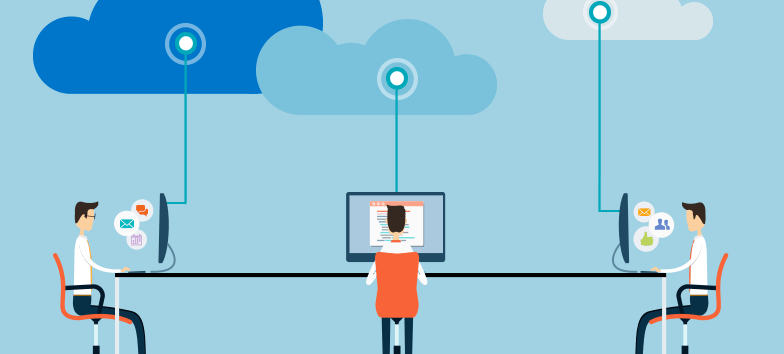There is one consistent trend across Mobile, Cloud, Artificial Intelligence, IoT (and of course privacy) in a world of evolving technologies – data is more important than ever before.
In fact, most of the latest technological advancements have one thing in common – large data volumes.
If we consider the business benefits behind these technological advancements we find that all areas of a business, including marketing, sales, admin and customers service (to name a few) are craving data to make quicker, better decisions.
Data is everywhere and businesses that use it wisely can unlock endless opportunities.
In this post, we are going to explore how businesses can make better use of large data volumes currently available to them and finally generate the smart insights they have been looking for.
What can Data do for your business?
All areas of a business can benefit from data that is meaningfully presented.
Marketing teams want data to understand customer behaviour, buying patterns and consumer trends.
Sales teams and managers want to understand the customer buying journey to anticipate buying patterns. With access to unlimited online information, the consumer is better educated than ever and is usually 80% of the way through the buying cycle before making contact with a sales team. The sales team needs access to data to better understand and manage this buying journey.
Admin teams have always had access to big data volumes coming from invoicing, payments, banking and inventory data. The question has always been what they can do with this data?
Customers and suppliers have access to data from multiple different sources. Social media, review sites, videos and more. This means that suppliers and customers are able to “self-educate” through the buying cycle.
The challenge is how do we make sense of data coming from different sources and presented in different formats?
To answer this question, we need to understand why Data structure is key.
Why “structure” is key to understanding data
Take Artificial Intelligence (AI) as an example. AI needs data – lots of data – to detect trends and to be able to suggest alternatives. Many of the data analysis tools that we have access to are sorting through data to give us insight into trends, and patterns to give us a “new view” of the world.
Connected IoT (Internet of Things) devices, on the other hand, means that we live in a connected world all day, every day. Most of us use multiple devices such as smartphones, tablets, notebooks PCs and we subscribe to multiple channels for day to day use – movies, music, collaboration tools and social media for instance. Think of all those connected devices and platforms. You can tell a lot about someone based on their buying trends and usage through connected devices. You can pick up trends such as how often does someone travel, where and how does the individual shop, what’s important to the individual or company and more.
Your digital footprint says a lot about your buying behaviour – this is true for consumers as well as businesses.
All of this and a whole lot more becomes apparent as you get data from multiple connected sources.
The challenge for companies wanting to leverage data for decision making is that data without structure is meaningless. It’s rows and columns, nothing more.
You need tools to make sense of data, detect trends and make recommendations.
Here are some of the most important aspects to consider when choosing how to structure data for extracting meaningful information.
- #1 Data Collection. This is topical at the moment. Obviously, privacy concerns will continue to make headlines. Companies will need to be extremely careful about how they collect and use data – from ethical and “opt-in” sources.
- #2 Sorting and analysing data. This is not as easy as it might at first appear. In its simplest form, analysing data requires Business Intelligence type tools to categorize and report on large data volumes. The future of data analysis is Artificial Intelligence. This implies collecting data, analysing the data in seconds or milliseconds and making meaningful recommendations and then learning from that data and those recommendations to constantly refine and improve the outcomes.
- #3 Doing something meaningful with data. Lots of data is pointless unless we are making and acting on meaningful decisions associated with the learnings from the data. We are about to make the leap from data volumes being available for business intelligence and reporting to systems that find, sort and recommend actions the refine the results and make better or alternative recommendations to help you run a better business.
A real-life example of the business benefits of Data
Let’s consider a real-life example of the business benefits associated with carefully structured data. After all, we don’t want to implement new technology simply for the sake of having the most up to date technology. What we want is the real business improvement – cash flow, customer satisfaction and increased sales margins for example.
Let’s assume you are a mid-sized distribution business and let’s assume that the goal is on-time in-full delivery to your customers whilst holding the lowest possible inventory.
This has long been the great balancing act for distribution companies. You don’t want to tie up cash flow in inventory, but you do want to hold enough stock to deliver on time in full.
How can you use data to achieve your goal? The connected world, using data from years of trading can be used to detect purchasing, sales and delivery trends.
- Enter IoT, AI and Big Data, your systems should be able to sort through years of historical data and trends to show you accurate forecast sales for the next few months.
- These numbers can be fed into a Material Requirements Planning (MRP) or purchase planning solution which will look at data from the forecast, lead times, current inventory levels, economic order quantities and make purchase order recommendations.
Powered by historical data, the system will also be able to automate your business.
- Analyse historical data to see if estimated lead times are accurate based on historical supplier deliveries;
- Consider weather patterns to see if shipping deliveries might be delayed based on bad weather;
- Link to the contract manufacturer overseas to monitor the timing of the manufacturing process and timing of your shipment to automatically update your delivery schedule;
- When the goods arrive in Australia, data will be provided to your purchasing manager to notify them that the goods have arrived and are clearing customs;
- Estimate clearance times based on previous customs clearance timelines for similar shipments;
- Customers will be automatically notified of the delivery schedule;
- When the truck leaves the depot to deliver the container of goods to your warehouse, the system will estimate the delivery timeline down to the minute based on current traffic and driver schedules. Your warehouse staff will be available to unload the container as it arrives.
At the same time, the system will review all customer orders and will notify your customers of their updated delivery timeframes based on customer location, driver routing and traffic conditions.
Wrapping it up
If you want to get ahead of the pack your business will need to get used to dealing with large data volumes from multiple different sources.
There is a competitive advantage to be had from quicker, better decision making. From better sales and marketing management, customer service, operations, finance and all other areas of a business can benefit from a structured approach to data management.
Want to learn more about how to leverage data to streamline your business and unlock strategic insights? Call us on 1300 045 046 or email [email protected] to get started today.







